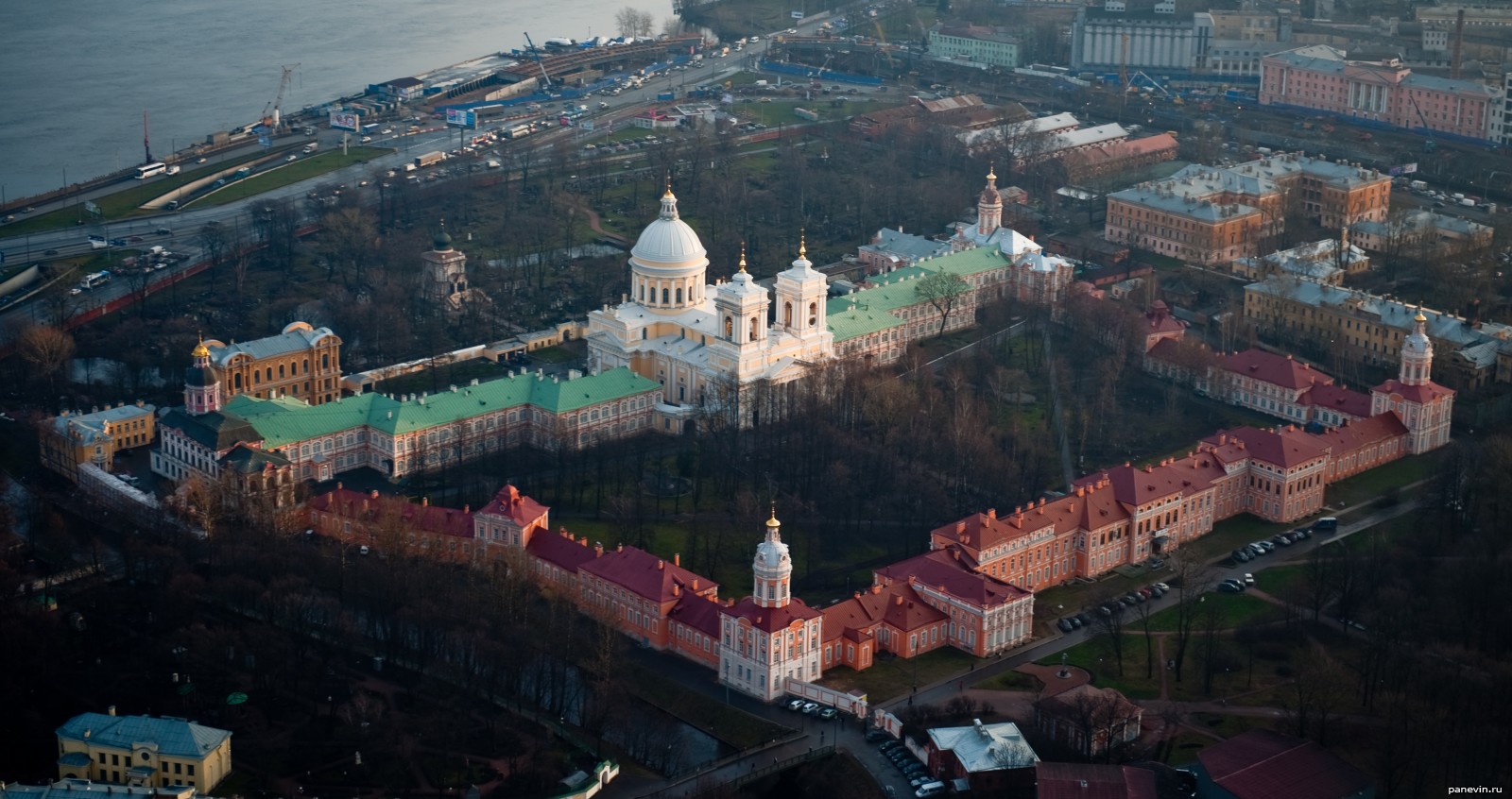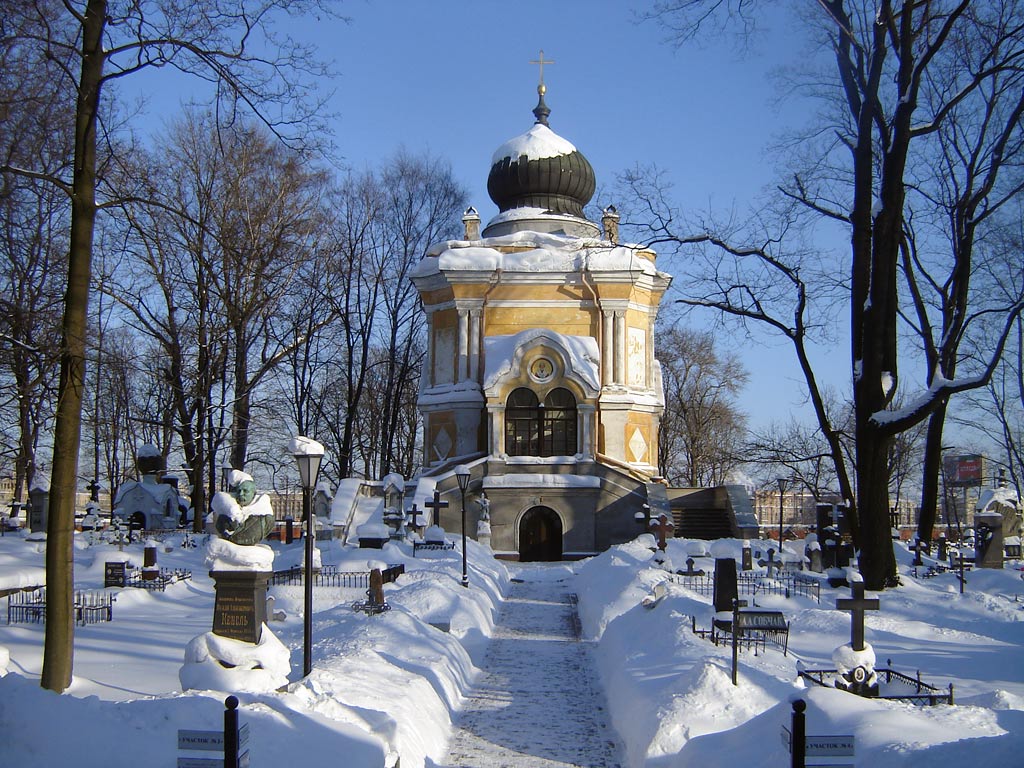Saint Alexander Nevsky Lavra or Saint Alexander Nevsky Monastery was founded by Peter I of Russia in 1710 at the eastern end of the Nevsky Prospekt in Saint Petersburg supposing that that was the site of the Neva Battle in 1240 when Alexander Nevsky, a prince, defeated the Swedes; however, the battle actually took place about 12 miles (19 km) away from that site."On April 5, 1713, in St. Petersburg, in the presence of Peter I, the wooden Church of the Annunciation was consecrated. This day is considered the official founding date of the Alexander Nevsky Lavra."
"The relics of St. Alexander Nevsky were solemnly transferred from Vladimir to the new capital of Russia September 12, 1724 by decree of Peter the Great."Nevsky bcame patron of the newly founded Russian capital; however, the massive silver sarcophagus of St. Alexander Nevsky was relocated during Soviet times to the State Hermitage Museum where it remains (without the relics) today.
In 1797, the monastery was raised to the rank of lavra, making it only the third lavra in the Russian Orthodox Church that had that designation bestowed upon it, following only the Kiev Monastery of the Caves and the Trinity Monastery of St Sergius.
The monastery grounds contain two baroque churches, designed by father and son Trezzini and built from 1717–1722 and 1742–1750, respectively; a majestic Neoclassical cathedral, built in 1778–1790 to a design by Ivan Starov and consecrated to the Holy Trinity; and numerous structures of lesser importance. It also contains the Lazarev and Tikhvin Cemeteries, where ornate tombs of Leonhard Euler,Mikhail Lomonosov, Alexander Suvorov, Nikolay Karamzin, Modest Mussorgsky, Pyotr Ilyich Tchaikovsky, Fyodor Dostoevsky, Karl Ivanovic Rossi, Prince Garsevan Chavchavadze, a Georgian aristocrat, Sergei Witte and other famous Russians are preserved.











